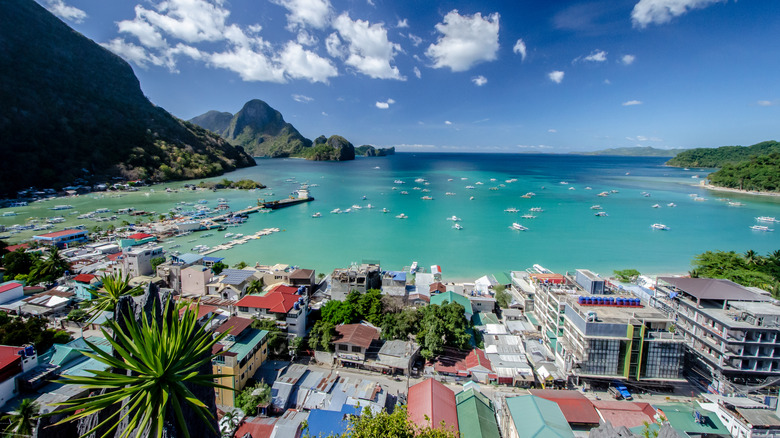This Tropical Island Nation In Southeast Asia Is Making A Major Move For Remote Workers
Ever since the pandemic, the number of people working remotely has skyrocketed to nearly half of Americans with an advanced degree (as per the U.S. Bureau of Labor Statistics). Many, no matter the degree, have come up with crafty ways to work unique jobs, such as TikTok influencing and entrepreneurship. Suddenly, there was a wave of people realizing they could be mobile and work, and instead of staying put, they fled to beautiful countries, like the Philippines, and became "digital nomads." After all, answering a Zoom meeting while lodging in a surfer's paradise known as the "Bali of the Philippines" is not a bad way to spend the workday. However, like Europe's Schengen visa, there are limitations when making a move like this ... but for the Philippines, it just became a whole lot easier.
At the end of April 2025, President Bongbong Marcos officially accepted the implementation of a Digital Nomad Visa (DNV) in the Southeast Asian country (via Good Governance). His hope is a symbiotic relationship between foreigners and locals: DNV users can live where they desire, all while improving the economic and tourism development plans.
What you need for the Filipino Digital Nomad Visa
To obtain a Digital Nomad Visa, there are a couple of requirements to follow for the application and rules to abide by when you arrive. You must be 18 and show proof of remote work with a working digital device. You must have a clean record, have sufficient funds to move to the country, and obtain health insurance within the Philippines valid for the length of your stay. A maximum visa stay for the Filipino DNV is one year. Your native country must offer DNVs to Filipinos, and the Philippines must have a Foreign Service Post there. Lastly, you can't pose as a threat to the Southeast Asian country or be employed there while on a visa. If you are found working with a Filipino employer, the government has grounds to revoke your visa.
The visa will be available for applicants by late June to early July 2025, which is within 60 days of when the order went into effect (via Philippine News Agency). If you are on this visa, you can renew it by the end of the year. President Marcos hopes this mitigates the fluctuation between tourist season in the Philippines as people can now stay longer term.
Interested in other Asian visas? Check out whether or not you need a visa to travel to China.

